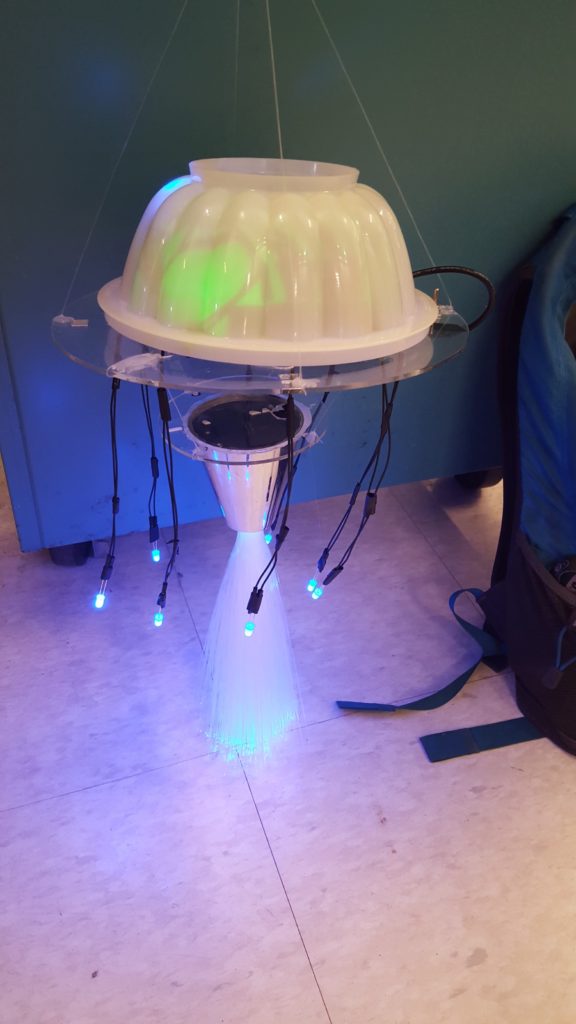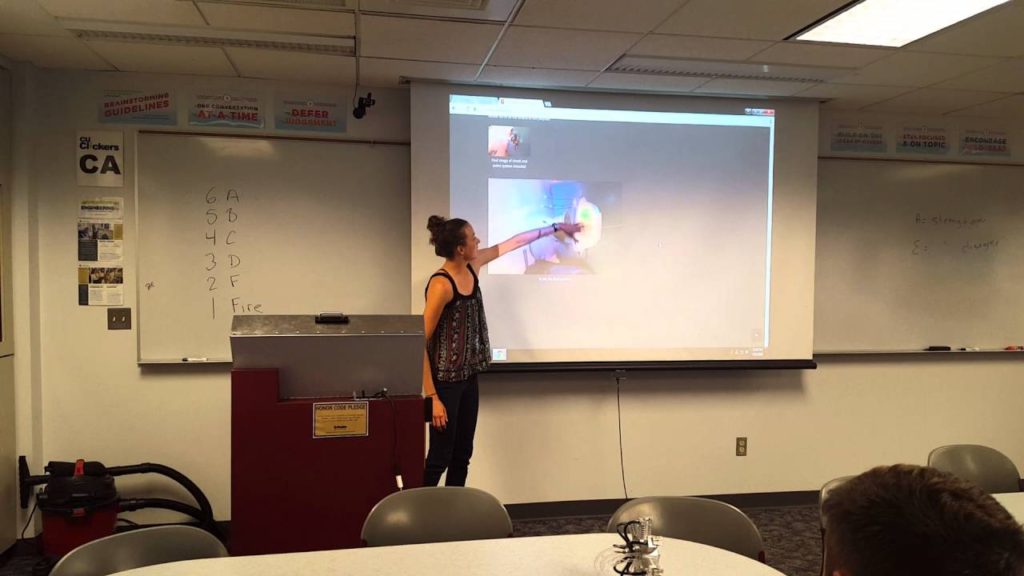Reflections:
- Simple is better: I really struggled with my Arduino code for a few weeks trying to get the sensor to work. I kept on adding more into the code, running it, and then the problems only seemed to add up. What worked out better was to first take a step away from the project, then come back and make individual scripts of simple code to troubleshoot what wasn’t working. I realized that I had switched the “high” and “low” values opposite of what they needed to be and this was the simple fix
- Your initial design is definitely going to go through iteration. I thought that my first design of a fiber optic chandelier was going to be my final design. Early in the fabrication process, I realized my project looked much more like a jellyfish, so my design changed into a jellyfish
- Be flexible and use mistakes to your benefit: I made the mistake of cutting the center hold on the base that holds the Arduino, 2x the size it was supposed to be. I then did some brainstorming and realized that the project would actually look cooler with the fiberoptic hanging below this base plate and it looked way better than my initial design
- Everything takes longer than expected: I was expecting to be done with this project before Spring Break, since a few weeks after I had nationals. I completed most of the project before Spring Break (good thing I started early) and the rest of the coding took a few more weeks to complete.
- Be open to learning new skills: initially I was intimidated by the idea of incorporating electrical components into my project. It was a steep learning curve with Arduino, but I am so glad I was able to learn this new skill and took the time to do it.
- Get help: I got a ton of help from Tim May and Dan Godrick. In the past I have been very independent, not wanting to ask for help. My project wouldn’t have turned out as great without their assistance.


